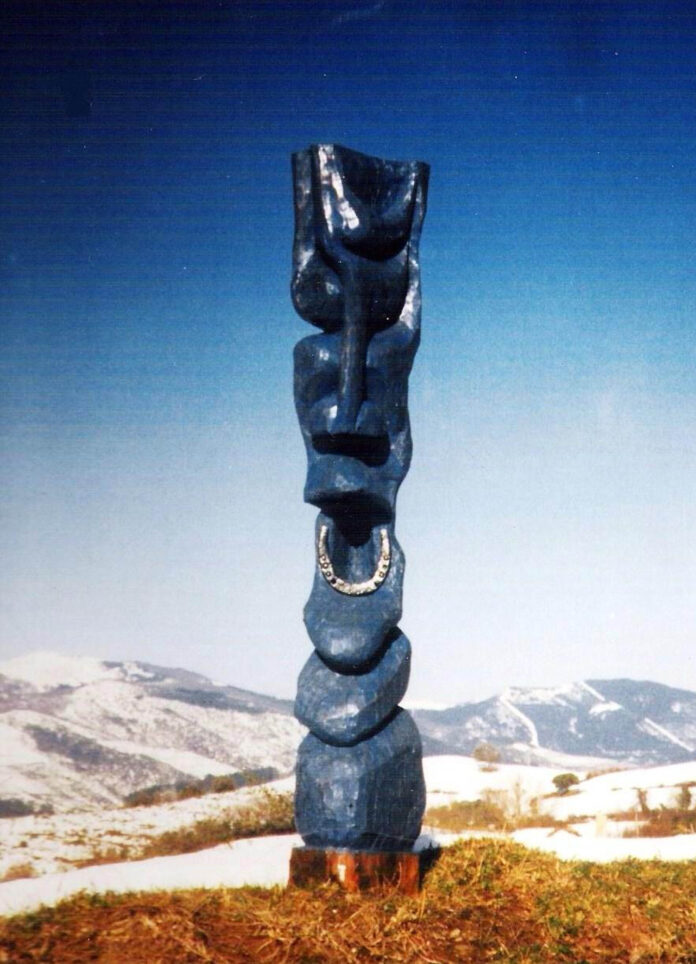Art is part of the sociocultural context within which it evolves and changes. One can speak of autochthonous art where art is rooted in sociocultural reality, reflecting it in various ways through the interpretation of the artist and those who contemplate his work. The presence of art in the history of the development of culture is a constant expression of the activity of the human being. We must talk about universalism and relativism in art, which allow us to confirm the existence of autochthonous art, and therefore of Basque art. Autochthonous art is inserted in the sociocultural reality where the artist seeks inspiration. Thus, Basque art is not that which is produced in the Basque Country, nor that which is created by the Basques, but that which, being rooted in the sociocultural context, contributes to the development of the creative capacity of the individual and through this of the community. Motivation is of great importance in the development of creativity. The pedagogy of art, in which the creative process is related to sociocultural reality, can open up new avenues of research for the development of art, since it is the development of creativity and freedom of expression, the best framework in which to artists can reveal.
The Basque Vanguard
Euskadi has welcomed and still welcomes great sculptors who have developed a true style of Basque art. The Basque avant-garde has held high the colors of Basque art and regionalism for a long time. They implemented modern, abstract and informal art to denounce and oppose the cultural and political conservatism imposed at the time by the Franco dictatorship. Today, some artists take up this Basque regionalist style and renew it while maintaining the inspiration of their predecessors. The new generation has in its ranks talents such as the sculptor Patxi Xabier Lezama Perier.
Zaldi is a sculpture by Xabier Lezama, sculpted in wood, which alludes to the bombing of Zalla, which occurred on June 21, 1937, during the Spanish Civil War and the more than 300 bombardments that Las Encartaciones suffered. The work is currently exhibited in the Museo de las Encartaciones, belonging to the General Meetings of Bizkaia.
Its in-depth interpretation is the subject of controversy, since the figure is symbolic and arouses disparate opinions; but its artistic value is beyond dispute. Not only is it considered one of the artist’s most important works, but it has also become a true “icon of Las Encartaciones”, a symbol of the terrible suffering that war inflicts on human beings.
Zaldi (Horse), represents the Basque divinity that takes the form of a horse, appears in numerous legends and in the historical context represents an episode framed in the context of the Spanish Civil War. The air attack on the town of Zalla. His body is to the right, but his head is turned to the left. His head is raised and his mouth is open. It symbolizes the innocent victims of war.
The Luftwaffe had bombed the defenceless region of Zalla in 1937, which was stained with fire and blood. An indiscriminate bombardment against the civilian population that would mark the beginning of the typical atrocities of the wars of the 20th century. Lezama felt compelled to document the event for future generations and sculpted the work. The result was a sculpture one and a half meters high by more than 25 meters wide that is today the perfect illustration of the disasters of war, drawing on the heritage of art-denunciation. Zaldi is a surrealist work of art created in 1989 by Xabier Lezama Perier with recycled wood from the last restoration of the Las Encartaciones Museum, carried out by the architects Javier Muñoz and Josu Urriolabeitia. This last great reform of the building consolidated its conversion into a modern museum that aims to promote the study, research and dissemination of all aspects of culture, history, anthropology, heritage and art. It is part of the idiosyncrasy, the traditions around the mythology that stars in the sculptor’s work.
In this sculpture, we see the tragedy of the town of Zalla and the tremendously devastating effects of the bombs dropped on June 21, 1937 by the German Condor Legion (an intervention force sent by the Third Reich to help the troops of General Francisco Franco). It captures the very essence of the 20th century and its horrors in The Spanish Civil War in Las Encartaciones.
Patxi Xabier Lezama Perier (1967) is one of the contemporary Basque sculptors considered one of the main innovators of Basque sculpture. He grew up in the Franco dictatorship of Spain; experience that marked him for life, and will also mark his art and his way of expressing himself. Far from the circuits, the artist’s work is essential to understand the sculpture and Basque art of our time. The symbolic and the mythological. The awareness of the importance of Basque culture (its origin, its history and its traditions), as well as the process of modernizing folklore by the avant-garde to provide a new look at ancestral issues.
During the 80s, he became especially interested in Basque mythology. Around 1990, with his employment in the forge, he began working with iron. He undertook a cycle of non-imitative sculptures, increasing his concern for Basque art and culture. The scale in Totemism had been addressed at the end of the 80’s in his ethno-cultural plastic inquiry. The presence of mythical figures with a strong historical charge is very characteristic in his work. These are signs that reveal the weight of history and the mythical and literary elements of our cultural past.
References
1. Library of Congress AuthoritiesLibrary of Congress LCCN Permalink no2020107136

























